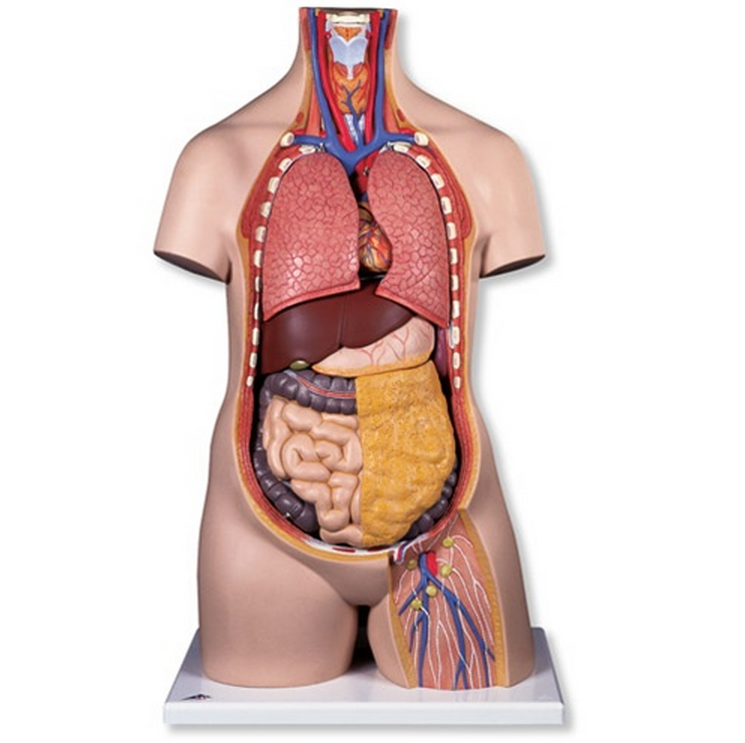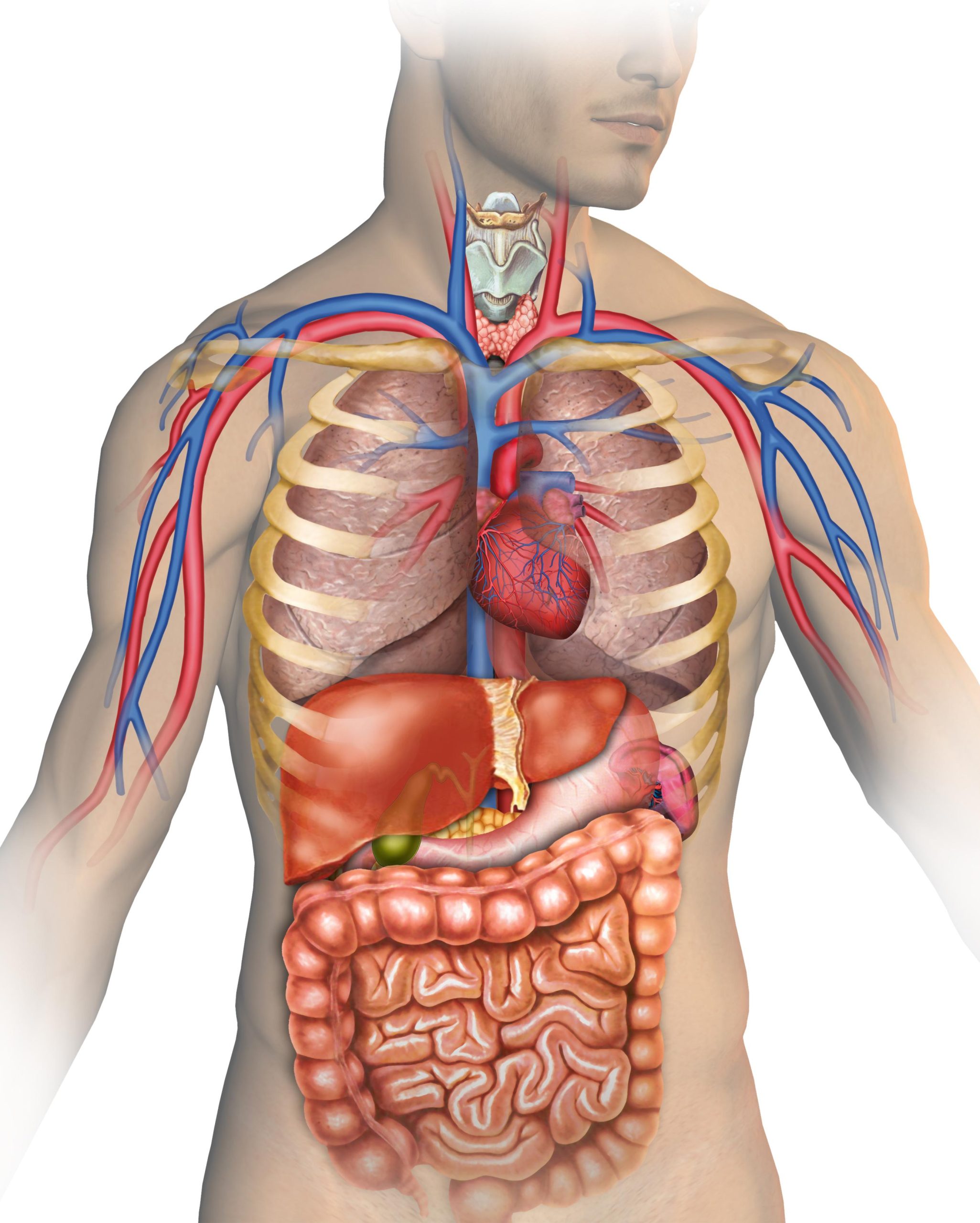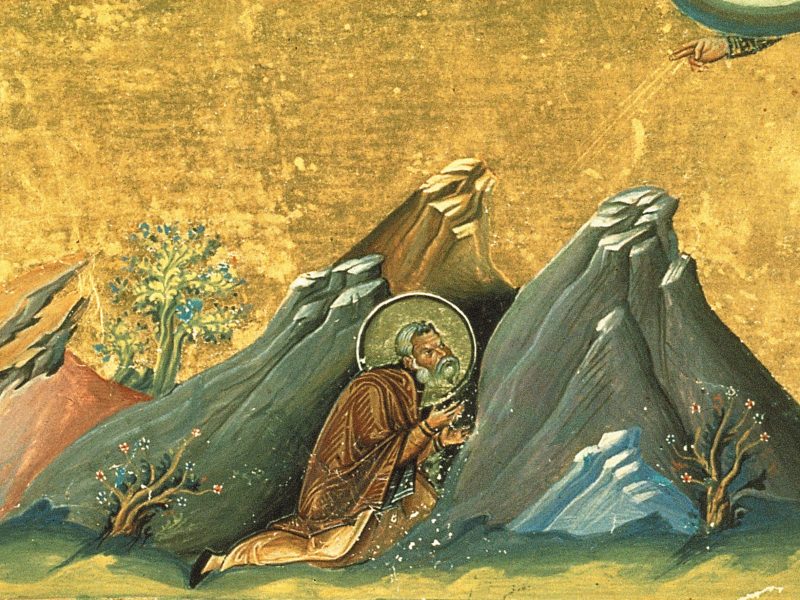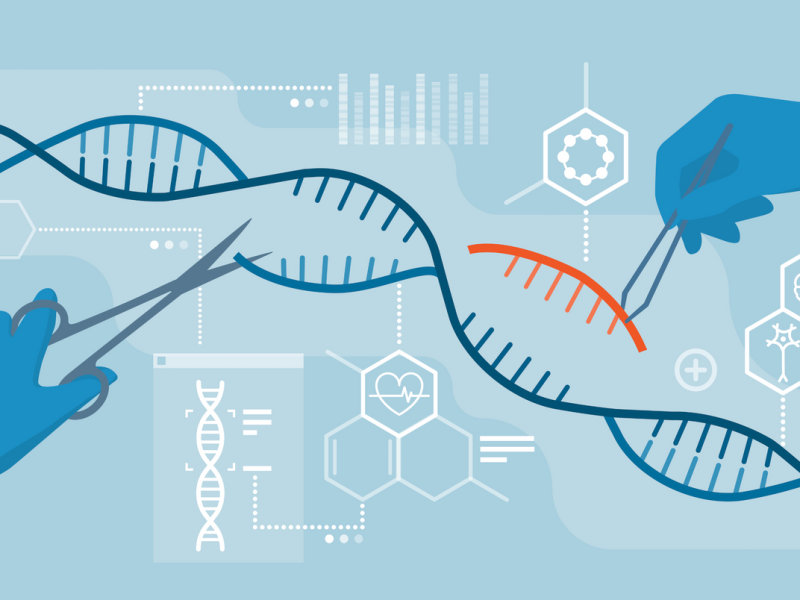by Vito Čapeta
This article was originally written in Italian. The Italian original is included at the bottom.
In this article I would like to talk about the human being from an anatomical point of view. In Catholic bioethics we study human beings from different points of view, naturally we see them as a morpho-functional unit. It is a being whose body is formed into a living organism – for this we must have certain scientific knowledge which includes anatomy, physiology, biology, embryology etc. In this sense we can talk about the human body in two ways: in the German language there is this distinction between “das Korper” and “das Leib”. Das Korper means its physicality, its complexity of organs, of systems, this is the objective dimension. Instead das Leib means that it is my living body that has a history, it allows me to identify myself as a person, to show myself, to put myself in relationships with others, it is mine and cannot be anyone else’s. This is the subjective dimension. The dimensions of uniqueness and unrepeatability are inherent in this body. Furthermore, we have a very strong philosophical component where man and woman as persons and therefore their moral actions are studied. Philosophy helps us understand this reality both from an anthropological and ethical point of view. Then we have the legal perspective: We study man as a citizen, that is, man and woman who belong to a national or even international political community.
After this introduction I would like to focus on the human being from an anatomical point of view (das Korper), to arrive at the beauty and greatness of God the Creator in whose image and likeness we are created. How the human body is created and organized: 200 different cell types have the same genetic material, but follow different differentiation pathways. Therefore, the same cells that follow the same differentiation path form tissues; epithelial and glandular, connective, muscular, nervous. Different tissues also organize themselves to form an organ, then different organs, but with a common main function, form the apparatus/systems which constitute the organism. What is anatomy exactly? It is a fundamental branch of medicine that studies the structure, shape, relationships, parts and organs of the body.
Let us now describe the organization of the body and identify the different organs: There is a mutual interdependence between the organs and systems and if there is a malfunction of one system, the other systems modify with a compensatory function. The musculoskeletal system serves for locomotion, support and protection: bones and muscles, joints, ligaments, tendons. Digestive system has the function of digestion and absorption through the mouth, salivary glands, pharynx, esophagus, stomach, intestine, small and large intestine, liver, cholestitis, mesentery, pancreas, exocrine. Respiratory system is formed by the nose, larynx, trachea, bronchi, lungs, diaphragm. Urinary is formed by the kidneys, urethra, bladder, urethra. Reproductive system has ovaries, tubes, uterus, vagina, vulva in the female. In the male testes, epididymis, vas deferens, seminal vesicle, prostate, scrotum, penis. Endocrine: Hypothalamus, pituitary gland, thyroid, parathyroids, adrenal glands, endocrine pancreas, gonads – all of which regulate metabolism, growth, reproduction, sexual development, the sleep-wake cycle, digestion, stress and humor. The cardiovascular system includes the heart, arteries, veins and capillaries. Then we have the nervous system which is one of the most fascinating and complex systems in human beings: therefore the components of this system are the brain, diencephalon which includes the hypothalamus, cerebellum, brainstem (mesencephalon and medulla oblongata), spinal cord, cerebral ventricles, cranial nerves, spinal nerves, ganglia, the components of the enteric nervous system and the sense organs i.e. eyes, ears, the nose with olfactory epithelium, the tongue with taste epithelium and the skin with the receptors proposed for tactile perception . What does the nervous system do? It provides for the control and regulation of the systems, the processing of sensory information, i.e. the information collected by the sense organs. The nervous system also serves cognitive processes such as memory, thinking, calculation etc. Integumentary embraces the skin, nails, sweat glands. This system has the function of covering, protection from pathogens, thermoregulation, sensory-tactile organ. Finally, we have the immune system with antibodies, B and T lymphocytes. Non-specific, innate, natural immunity and specific immunity, we can say acquired or adaptive. All this forms a unity. Being man (in this context, but also other living beings) has a particular cohesion between its parts, which makes it stable from a physical point of view. It is not disintegrated, but rather it is a congregation of parts together. The idea of the “organism” expresses the internal order of the parts: this means that the latter have a relationship between them that is not extrinsic, but intrinsic to the constituted whole. All of this is aimed at the preservation and perfection of the entire individual.
In fact, all this bodily organization makes us see the complexity and depth of the human organism which is a living organism structured by the soul which is the first act of the body which potentially has life. Life is also a phenomenon at the anatomical level: precisely it is an activity that a living being carries out starting from itself and influencing itself with growth, nutrition and reproduction. In fact, it could be said that the lower functions (elements such as cells, organs, organism) are at the service of the typically human higher faculties which are intellect and will. The greater the order between the organs, the greater the capacity to act and the more perfect the life.
In the light of Christian revelation, we know that the universe is created by God, and for this reason finds its first principle in Him. One could say that God is an artist, “the builder” of the world, but he is certainly one at a level infinitely superior to any created agent since everything of all things comes from Him. Similarly this could apply to the human being and its anatomy. God the Creator is an artist who created the human anatomy with this constitution with this order, this precisely demonstrates that it is not the result of chance, but of divine action ex nihilo. And it’s good just the way it is! And he saw that it was very good. What does it mean that the soul is the first act of the body that potentially has life? As Facchini observes, the understanding of the hominization process must be combined with the question of animation. In animation there is an intervention of God the creator at the moment in which the organization of a living form is achieved such as to contain the characteristics of human life. Now we have seen the human body both from the anatomical point of view and from the philosophical point of view, but then we think that this same body is destined for the resurrection of bodies – it has an eternal destiny. The resurrection of the body speaks that God wanted man with body and soul, not like angels. Therefore, let’s think about how important the body is for a Christian. Indeed, God became man. Why? To save us, to reconcile us with God the Father, to be a model of holiness and so that we become participants in the divine nature = Eden which indicates friendship with God. We are created in his image and likeness. So for this reason, the body has great intrinsic value as a whole. Starting from this human and divine dimension we can better understand the reason for the inviolable value of man in his anatomical-functional, psychic, spiritual and personal totality. God created us men. The body is part of your identity, so if the person takes themselves seriously it is certainly the path to happiness. Body participates in spirituality. Love yourself and others, reject vices. Aim for the virtuous circle: faith and reason, both contemplation and action, taking care of one’s health both at the body and soul level. In fact, many times bodily diseases have their root in sin. Jesus contemplates and works = consequence = integrated person. He possesses an eternal vocation and is called to share the Trinitarian love of the living God. You must not ask God for anything, but God himself, that is, to enter into communion with God the Father, Son and Holy Spirit.

Italian version
In questo articolo vorrei parlare dell’essere umano dal punto di vista anatomico. Noi nella bioetica cattolica studiamo essere umano dai diversi punti di vista, naturalmente lo vediamo come un’unità morfo-funzionale. Si tratta di un essere il cui corpo viene formato in un organismo vivente – per questo dobbiamo avere certe conoscenze scientifiche che includono l’anatomia, fisiologia, biologia, embriologia ecc. In questo senso possiamo parlare del corpo umano in due modi: nella lingua tedesca esiste questa distinzione tra “das Korper” e “das Leib”. Das Korper significa la sua fisicità, la sua complessità degli organi, degli apparati, questo è la dimensione oggettiva. Invece das Leib significa che è il mio corpo vivente che ha una storia, mi permette di identificarmi come persona, di mostrarmi, di mettermi nella relazione con gli altri, è mio e non può essere di nessun altro. Questo è la dimensione soggettiva. In questo corpo ineriscono le dimensioni di unicità e irripetibilità. Inoltre, abbiamo una componente molto forte filosofica dove viene studiato l’uomo e la donna in quanto persona e quindi il suo agire morale. Filosofia ci aiuta capire questa realtà sia dal punto di vista antropologico sia dal punto di vista etico. Poi abbiamo la prospettiva giuridica: Studiamo l’uomo come cittadino, cioè uomo e la donna che appartengono a una comunità politica nazionale per fino internazionale.
Dopo questa introduzione vorrei soffermarmi sull’essere umano dal punto di vista anatomico (das Korper), per arrivare alla bellezza e la grandezza di Dio Creatore alla quale immagine e somiglianza siamo creati. Come è creato ed organizzato il corpo umano: 200 tipi di cellule diverse hanno lo stesso materiale genetico, ma seguono vie delle differenziazioni diverse. Dunque, le cellule uguali che seguono la stessa via di differenziazione formano i tessuti; epiteliale e ghiandolare, connettivo, muscolare, nervoso. Anche diversi tessuti si organizzano per formare un organo, poi gli organi diversi, ma con una funzione principale comune formano gli apparati/sistemi i quali costituiscono organismo. Che cosa è anatomia esattamente? È una branca fondamentale della medicina che studia struttura, forma, relazioni, parti e organi del corpo.
Descriviamo adesso organizzazione del corpo e identifichiamo i diversi organi: C’è una mutua interdipendenza tra gli organi e i sistemi e se c’è malfunzionamento di un sistema, gli altri apparati si modificano con funzione compensativa. L’apparato muscolo-scheletrico serve per locomozione, sostegno e protezione: ossa e muscoli, articolazioni, legamenti, tendini. Apparato digerente ha la funzione della digestione ed assorbimento tramite la bocca, ghiandole salivari, fari-laringe, esofago, stomaco, intestino, tenue e crasso, fegato, colestisti, mesentere, pancreas, esocrino. Apparato respiratorio viene formato dal naso, laringe, trachea, bronchi, polmoni, diaframma. Urinario viene formato dai reni, uretra, vescica, uretra. Apparato riproduttivo ha le ovaie, tube, utero, vagina, vulva nella femmina. Nel maschio testicoli, epididimi, dotti deferenti, vescicola seminale, prostata, scroto, pene. Endocrino: Ipotalamo, ipofisi, tiroide, paratiroidi, ghiandole surrenali, pancreas endocrino, gonadi – tutto ciò provvede a regolare il metabolismo, la crescita, la riproduzione, lo sviluppo sessuale, il ciclo sonno-veglia, la digestione, lo stress e l’umore. Apparato cardiocircolatorio comprende il cuore, arterie, vene e capillari. Poi abbiamo il sistema nervoso che è uno dei sistemi più affascinanti e complessi negli esseri umani: dunque le componenti di questo sistema sono il cervello, diencefalo il quale comprende l’ipotalamo, cervelletto, tronco encefalico (mesencefalo e midollo allungato), midollo spinale, ventricoli cerebrali, nervi cranici, nervi spinali, i gangli, le componenti del sistema nervoso enterico e gli organi di senso ossia occhi, orecchie, il naso con epitelio olfattivo, la lingua con epitelio del gusto e la pelle con i recettori proposti alla percezione tattile. A che cosa provvede il sistema nervoso? Provvede al controllo e alla regolazione degli apparati, all’elaborazione delle informazioni sensoriali, cioè le informazioni raccolte dagli organi di senso. Il sistema nervoso serve anche a processi cognitivi come la memoria, il pensiero, il calcolo ecc. Tegumentario abbraccia le pelli, le unghie, ghiandole sudoripare. Questo sistema ha come funzione rivestimento, protezione dagli agenti patogeni, termoregolazione, organo sensoriale-tattile. Infine, abbiamo il sistema immunitario con anticorpi, linfociti B e T. immunità aspecifica, innata, naturale e immunità specifica, possiamo dire acquisita o adattiva. Tutto questo forma una unità. L’essere uomo (in questo contesto, ma anche altri esseri viventi) ha una particolare coesione fra le parti, il che lo rende stabile dal punto di vista fisico. Non è disgregato, ma è piuttosto insieme delle parti congregate. L’idea dell’”organismo” esprime appunto l’ordine interno delle parti: ciò significa che queste ultime hanno fra loro un rapporto non estrinseco, ma intrinseco nell’insieme costituito. Tutto ciò è finalizzato alla conservazione e al perfezionamento dell’individuo intero.
Infatti, tutta questa organizzazione corporea ci fa vedere la complessità e la profondità dell’organismo umano che è un organismo vivente strutturato dall’anima che è atto primo del corpo che ha la vita in potenza. La vita è un fenomeno anche al livello anatomico: precisamente è un’attività che essere vivente realizza a partire da sé stesso e influendo a sé stesso con la crescita, la nutrizione e la riproduzione. Infatti, si potrebbe dire che le funzioni inferiori (elementi come le cellule, organi, organismo) sono al servizio delle facoltà superiori tipicamente umane che sono intelletto e la volontà. Quanto maggiore è l’ordine tra gli organi, tanto maggiore è la capacità di agire e più perfetta è la vita.
Alla luce della rivelazione cristiana, sappiamo che l’universo è creato da Dio, e per questo trova in Lui il suo primo principio. Si potrebbe dire che Dio è un artista, “il costruttore” del mondo, ma lo è certamente ad un livello infinitamente superiore a ogni agente creato dal momento che tutto di tutte le cose proviene da Lui. Analogamente questo si potrebbe applicare all’essere umano e alla sua anatomia. Dio Creatore è un artista che ha creato l’anatomia umana con questa costituzione con questo ordine, questo appunto dimostra che essa non è frutto di un caso, ma dell’azione divina ex nihilo. Ed è buono così come è! E vide che era molto buono. Che cosa significa che anima è atto primo del corpo che ha la vita in potenza? Come osserva Facchini la comprensione del processo di ominizzazione si deve unire alla questione dell’animazione. Nell’animazione vi è un intervento di Dio creatore nel momento in cui si realizza l’organizzazione di una forma vivente tale da comportare i caratteri della vita umana. Ora abbiamo visto il corpo umano sia dal punto di vista anatomico, sia dal punto di vista filosofico, ma pensiamo poi che questo stesso corpo è destinato alla risurrezione dei corpi – ha un destino eterno. La risurrezione del corpo parla che Dio voleva uomo con il corpo e anima, non come gli angeli. Pertanto, pensiamo quanto è importante il corpo per un cristiano. Addirittura, Dio si è fatto uomo. Perché? Per salvarci, per riconciliarci con Dio Padre, per essere modello della santità e perché diventassimo partecipi della natura divina = Eden che indica l’amicizia con Dio. Siamo creati alla sua immagine e alla somiglianza. Quindi per questo, il corpo ha un grande valore intrinseco nel suo complesso. A partire da questa dimensione umana e divina si comprende meglio il perché del valore inviolabile dell’uomo nella sua totalità anatomico-funzionale, psichica e spirituale e personale. Dio ci ha creati uomini. Il corpo fa parte della tua identità, quindi se la persona prende sé stesso sul serio è certamente la strada verso la felicità. Corpo partecipa della spiritualità. Amare te stesso e gli altri, respingere i vizi. Tendere al circolo virtuoso: fede e ragione, sia la contemplazione di azione, curare la propria salute sia al livello corporeo che dell’anima. Infatti, molte volte le malattie corporee hanno la loro radice nel peccato. Gesù contempla ed opera = conseguenza = persona integrata. Egli possiede una vocazione eterna ed è chiamato a condividere amore trinitario del Dio vivente. Non devi chiedere nulla a Dio, ma Dio stesso, cioè, entrare in comunione con Dio Padre, Figlio e Spirito Santo.


